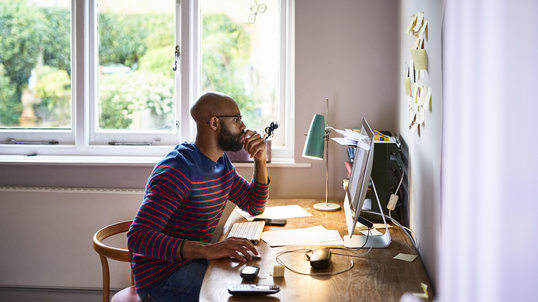Ergonomics in the Mobile Office


If your typical workday includes more time spent on the highway or in rest areas than around the office watercooler, you probably travel regularly for work. When driving is part of a job, proper car ergonomics become as important for your comfort and health as a well-adjusted desk chair. What are the two biggest risks for the mobile office worker? Not surprisingly, they are awkward body postures and prolonged sitting.
As with working at a traditional desk setting, taking frequent breaks is important to maintain visual concentration and avoid the health risks associated with prolonged sitting. It is important to pull over to a rest area and get out of your car when you feel tired, or at least take a break every two hours for at least 15 minutes. Change your position by stretching your legs, back, neck and arms, or by going for a walk.
Awkward or static postures are also an important risk factor for the driver, and there are several adjustments you can make to create a more natural position while driving. Adjusting your car’s seat and other features can help reduce the potential for musculoskeletal disorders, and can help ensure you arrive at your destination more rested and relaxed. When you drive with your hands on the steering wheel and your shoulders in a forward posture, there is added stress on the shoulders and upper back.
Your posture
- Maintain the natural curves of your back and minimize bending, twisting, reaching and excessive neck movement.
-
Familiarize yourself with the adjustability and location of the adjustment controls in your car or rental vehicle. Before each time you start driving, perform a few basic adjustments to help ensure your comfort.
Car seat
- Move the seat forward until you can easily and fully press the accelerator and brake pedals.
- Adjust the seat cushion tilt angle so that it supports your thighs along the length of the cushion, avoiding pressure behind the knees.
- Adjust the backrest so it provides continuous support along the length of your back and is in contact with your back up to shoulder height. Avoid being too fully reclined because it leads to excessive forward bending of the head and neck, extended reaching and visibility issues.
- Properly adjust the headrest to support your head and reduce the risk of injury in the event of a collision. Position the top of the headrest in line with the top of your head. Adjust it so that the distance between the headrest and the back of your head is as small as possible.
- Use extra lumbar support, such as a pillow, if necessary. Be sure the support does not overexaggerate the curves of your back.
Steering wheel
-
Adjust the steering wheel for easy reach. Elbows should be slightly bent. Ensure clearance between your knees and thighs, and make sure you have a clear view of the display panel.
Mirrors
-
Adjust rearview and side-view mirrors so you have an unobstructed view of all mirrors while sitting comfortably against your seat, and without having to lean forward or to either side.
Glare
-
Use sunglasses and adjust sun visors to reduce eyestrain and awkward postures due to the sun. Make sure the sun visors do not obstruct your view of the road.
In the parking lot
- If you need to use your laptop while you are on the road, park your car and move to the passenger seat, which is where you will have more leg room and room to type and position your body.
- When you type, do not twist or rotate your body because this will cause stress and strain on your back.
- Face your laptop so your body is as parallel as possible to the laptop monitor and keyboard.
- Maintain a reasonable distance between your eyes and the monitor.
- While in your vehicle, keep your laptop usage to a minimum as vehicles do not allow for the best ergonomic setup.



